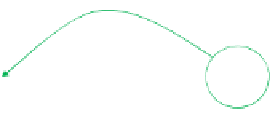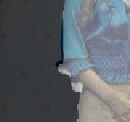Information Technology Reference
In-Depth Information
can redefine the new relative projection matrices for the left and right cameras on
the basis of the depth camera as Eq. 1.
P
'
=
K
[
I
|
O
]
s
s
−
1
P
'
=
K
'
[
R
'
R
|
t
−
t
]
(1)
l
l
l
s
l
s
−
1
P
'
=
K
'
[
R
'
R
|
t
'
−
t
]
r
r
r
s
r
s
where
P
s
′,
P
l
′, and
P
r
′ indicate the modified projection matrices of the depth, left,
and right cameras, respectively.
2.2 Depth Calibration
In practice, depth information obtained from the depth camera has three critical
problems. The first problem is that
the captured depth images are very noisy
. The
acquired depth images usually contain quantization errors and optical noise,
mainly due to the reflectivity or color variation of objects. The second problem is
that
depth data on shiny and dark surface regions can be lost or the boundary of
color images does not match well with its depth images
. The depth camera does
not capture shiny and dark surfaces well, such as black leather and black hair. Es-
pecially, for a 3D human actor it often causes the loss of hair region. In addition,
when we calibrate the depth camera using an auto calibration tool, it does not
guarantee an exact match between the boundaries of both images. The last prob-
lem is that
the measured depth information by a depth camera is not equal to the
real one
. Even though the distance from the depth camera to the object is constant,
depth information obtained by a depth camera depends on the capturing environ-
ment. In general, the depth camera system has its own depth calibration tool, but it
is very poorly calibrated. Figure 2 shows the problem of raw depth image.
No Depth Existence
Boundary Mismatching
Raw Depth Image from Depth Camera
Optical Noises
Fig. 2
Noisy depth image























